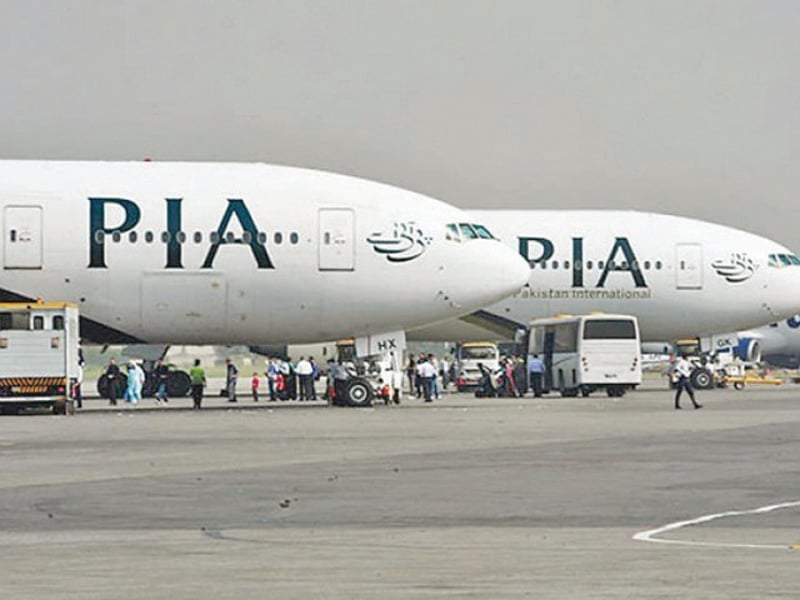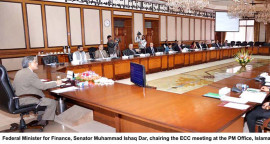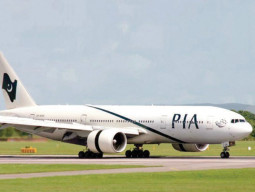
ISLAMABAD:
Everybody has heard about downsizing and rightsizing in the context of state-owned enterprises to improve their efficiency. Here is a new concept – let’s call it upsizing – that has been applied to one of the largest enterprises in Pakistan recently.
It is common knowledge that state-owned enterprises have become a pool of surplus labour, often employed on political reasons in various governments. The common solution, for increasing efficiency and bringing average cost down, is downsizing, which leads to retrenchment and results in reduced number of employees. It is also called ‘rightsizing’, ie, reducing the size of workforce of an enterprise to rightsize.

Many privatised firms, such as K-Electric and Pakistan Telecommunication Company Limited (PTCL), have successfully followed downsizing and rightsizing policies by laying off 8,000 and over 20,000 workers respectively since their privatisation. In the case of K-Electric, it has already paid off, as its bottom line has gone green for the first time. PTCL also remains a thriving business.
It is expected that a pro-business government of the PML-N would take necessary steps to bring state-owned enterprises in good shape by creating more space for the private sector. Even if outright sale to the private sector is not possible, important measures can be taken to improve efficiency and plug losses.
Downsizing, or rightsizing, remains a necessary, though very bitter, treatment. This can bring the cost of operations significantly down. However, the government seems to have adopted an alternative, and ingenious, strategy to improve efficiency and bring average costs down, at least in the case of Pakistan International Airlines (PIA). I call it upsizing.
Employee/aircraft ratio
A member of treasury benches in the National Assembly explained ‘upsizing policy’ on April 2 while responding on behalf of the government on the floor of lower house. So this is official.
During the question hour, MNA Sahibzada Tariqullah asked a legitimate question about increasing employee/aircraft ratio in PIA, and even compared it with some regional airlines. It turned out that PIA has around 18,000 employees at an average of around 800 employees per aircraft – almost four times the world average.
What follows is the reproduction of the question (my own translation) by MNA Sheikh Aftab Ahmad.
“Mr Speaker! Our ratio of employees per aircraft in PIA is very high compared with the region. We are making efforts to increase the number of aircraft instead of laying off our employees. We will buy new aircraft on dry lease which will adjust our (surplus) employees, thus bringing our employee/aircraft ratio on a par with international benchmarks.”
This is perhaps the best possible way to improve the average!
Thus, for any loss-making enterprise, to bring average cost of production down, we can always adopt a simple strategy – invest in the enterprise further, that is, with tax money or borrowed money, expand its operations, thus bringing the ‘average cost’ down. Momentarily.
The most straight forward thing to start fixing PIA should be to get rid of redundant employees (recall how degrees of some pilots have been questioned in courts), bring the management overhead down (it is being done) and attend to fundamental principles of good corporate governance. Recent resignation of a board member on account of lack of transparency does not augur well.
Political repercussions
The retrenchment will be obviously not without political backlash, but then that is exactly why the PML-N was sent into power. If this party would also be masquerading behind political compromises, despite its clear mandate, and clear majority, then it will not be able to undertake any meaningful reforms further.
At present, PIA has a fleet of 34 aircraft, of which only 25 are serviceable. They fly on 23 domestic and 30 foreign destinations. The airline has the market share of 60.2% (domestic) and 26.8% (international). True to its ‘upsizing strategy’, PIA management has decided to add 28 new aircraft to its fleet, thus more than double its size.
Can it also double its market size? And run in profit? Can it win over the competition from such airlines as Emirates? With the current pool and quality of staff, it is not likely to be possible.
Thus, the government should really reconsider the phasing of its decision to go ahead with the ‘upsizing option’ and must begin with sweeping changes in governance and management of the firm.
At present, PIA’s liabilities are twice as much as its assets, while its revenues are significantly short of achieving break even. With this kind of financial straits, adding new aircraft, the upsizing option, without first cleaning up the house, is fraught with significant risk. We think twice even before upsizing our meal at McDonalds!
The writer is executive director of PRIME Institute, a public policy think tank based in Islamabad
Published in The Express Tribune, April 21st, 2014.
Like Business on Facebook, follow @TribuneBiz on Twitter to stay informed and join in the conversation.
COMMENTS (9)
Comments are moderated and generally will be posted if they are on-topic and not abusive.
For more information, please see our Comments FAQ




































































To get a job in a state owned company you need to pay money. The higher up the food chain you are the more you have paid for it. To recoup that cost you need to earn money from kickbacks. Buying expensive toys for the company is a good opportunity to get kickbacks. That is the logic behind this upsizing drive.
Very well said that if a govt with heavy mandate like current one, and an agenda of reforms ,can not take such steps , then probably we are waiting for some proposal from the haven. It seems they lack the will to do that. In real sense , such steps will decrease the burden on the exchequer , thus providing the govt with more funds to spend on PSDPs.
Employees should not be given increments or bonuses, instead given PIA shares. This will create motivation for employees since they will work harder to increase stock price, if they procrastinate, their loss!
This is a great idea. This may bring down the cost of air travel and drive the private competition out of bussiness. This is Chinese-type economic warfare tactics by PIA . I think they also need to bring in Chinese or Russian advisors to learn how to properly run state-owned companies.
The best way is to attract overseas skill sets and provide the business vision to board of directors whilst adhering to the best best corporate governance structure.
Buying planes to address over staffing is probably the stupidest business plan ever developed - would receive a failing grade in any business school on the planet.
Increasing aircraft is a disastrous move. Fifty percent of the employees need to be reduced, even if it means giving them 5 years of free salary . At least then in 5 years the losses will come down.
very well written article with a lot of insight..